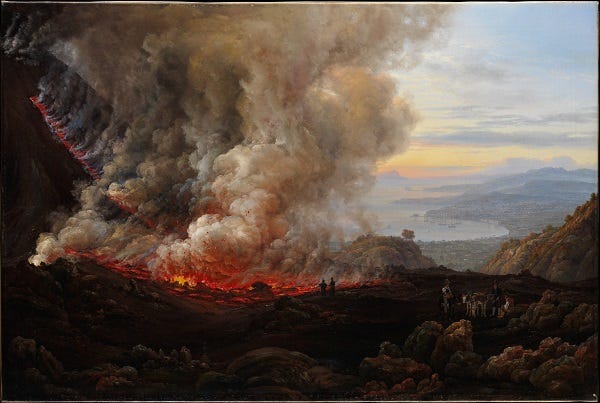
3 Nephi 9 is a difficult, shocking chapter. It forever wrecks ay attempts to turn the Jesus of the Book of Mormon into some kind of moral therapeutic deity who never sends trials or difficulty. Here Jesus says, “I destroyed your civilization. I personally burned Zarahemla and drowned the inhabitants of Moronihah in the sea,” along with a host of other equally terrifying and destructive things. It’s not “the devil did this because you followed him, so repent” or even “the random workings of the earth did this, so come unto me and I will heal you.” No. Jesus takes full responsibility for all of it. The destruction. The death. The burnings. The drownings. All of it.
But as shocking and disturbing as that is to our sensibilities, the event was cataclysmic for the Nephites. In the course of an afternoon, the entire physical substance of their civilization was gone. The cities laid to waste, the landscape changed beyond recognition. Most of the people killed. Then Jesus shook their moral foundation by publicly announcing the wickedness of the destroyed civilization. Then, to top it all off, He abolished the ceremonies and structures that even the faithful and righteous had relied on, ending the sacrifices and offerings of the law of Moses.
Can you imagine living through that? The closest thing in recent memory was probably the onset of the COVID-19 pandemic. There, in the course of an afternoon, churches and libraries and sporting events disappeared. Schools and stores closed. We faced the prospect of losing up to a third of the population, if the scariest early estimates were to be believed. But all of that is like spitting in the ocean compared to what the Nephites and Lamanites experienced. Nearly everything out of which a human life is typically made was just suddenly gone.
Who would worship the kind of god that does that to them? This is the modern question at the root of contemporary therapeutic notions of religion. One might carry a fear of or even muster up a grudging respect for the raw destructive power of God on display in 3 Nephi 9. But love that God? Desire an ongoing relationship? Live for eternity with that God? Devote yourself to becoming like that God? Strange as it may sound to the comfortable modern ear, this is exactly what all of us who are baptized members of the Church of Jesus Christ of Latter-day Saints have signed up for.
The answer to why we—or more importantly the Nephites and Lamanites who had just had their lives wrecked—might cleave to this God is not some cosmic version of Stockholm syndrome. Instead, the answer begins with the symbolism in the destruction of Nephite cities: collapsed into the sea, covered with earth, burned. While gruesome, these are familiar images: immersion, burial, fire. These are baptismal terms.
What should be most shocking about this recognition, however, is not that baptismal imagery is connected to something so destructive but that we have forgotten this connection. If being baptized and becoming a “new creature” hasn’t led to a restructuring of our lives as fundamental as the changes to Nephite society, then we have not understood the meaning of being born again. If we have not nailed the old man of sin (meaning ourselves) to the cross and let him die, we cannot fully access the Atonement. If we are not willing to let our wicked customs, buildings, even relationships be destroyed—by fire if necessary—to make way for Christ, then we are not worthy of Him.
And that is the entire point of baptism, to make room for something new. We abolish the old to start afresh. Destruction is a means, not an end. And this is exactly what Christ taught the Nephites. When He descended to teach, His first order of business, after introducing Himself to each of them, was to lay out his Gospel—the new laws and ordinances that would be the foundation of their renewal, exactly as Nephi promised He would hundreds of years before (2 Nephi 32:6). And in case that wasn’t clear enough, He told them explicitly: “Think not that I am come to destroy the law and the prophets; I am not come to destroy, but to fulfill.” (3 Nephi 12:17).
And so it is with us. Christ comes into our lives, relentlessly pursuing us. Sometimes the destruction and rebirth are gradual, sometimes they are sudden and devastating like for the Nephites and Lamanites, but they always come. And all of it is for the purpose of fulfilling the ends of our lives and making them match the ends of the Atonement.



